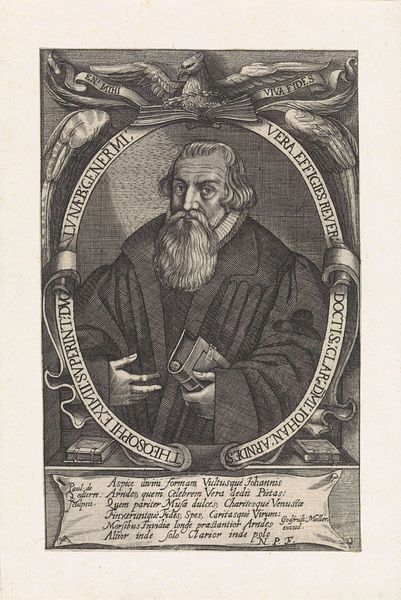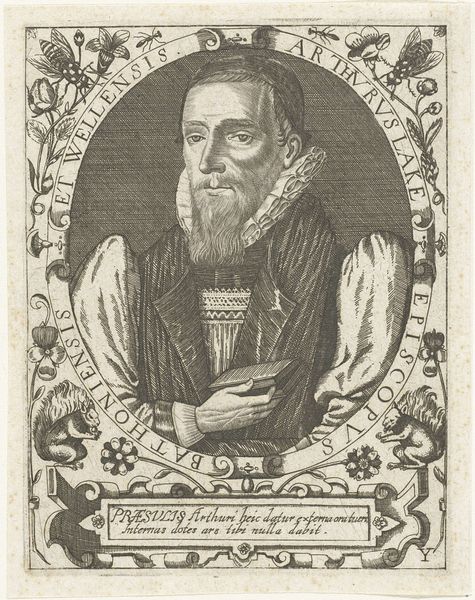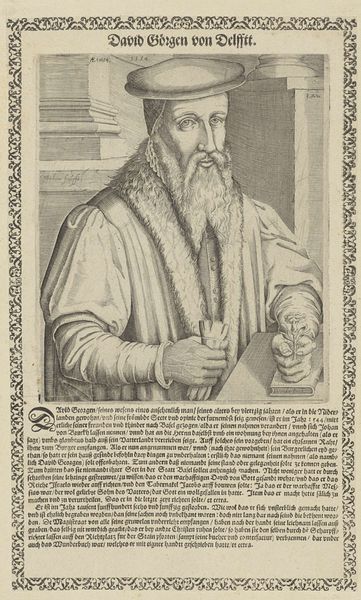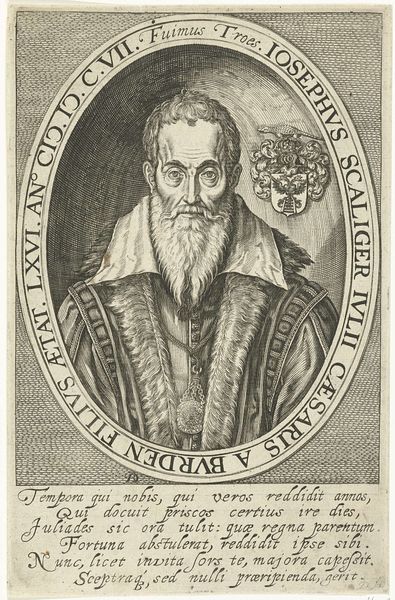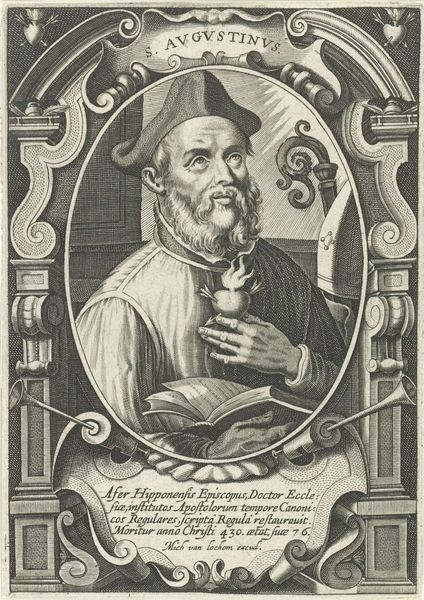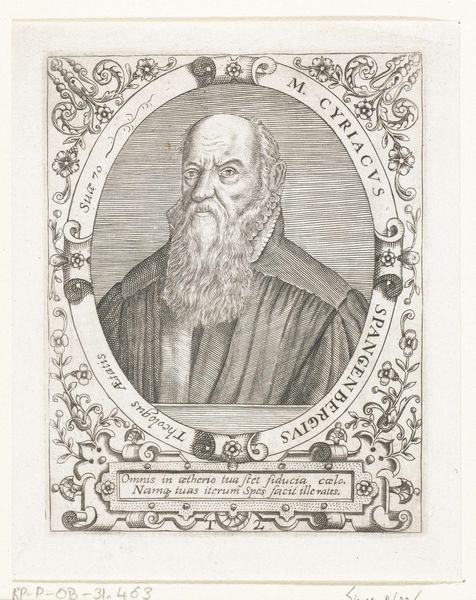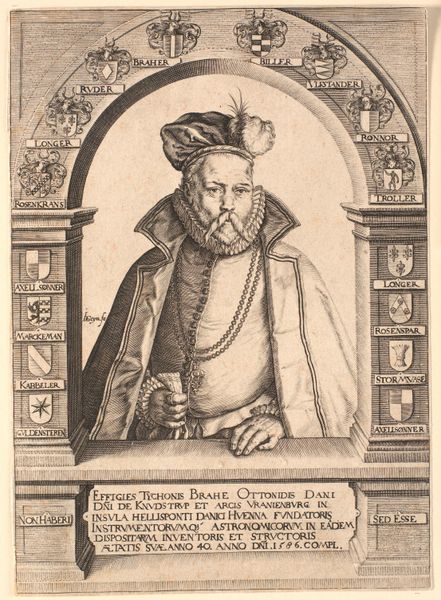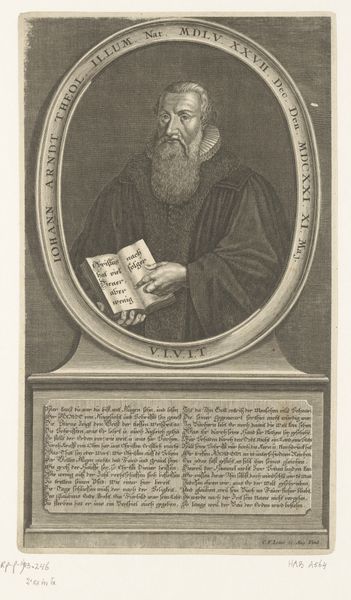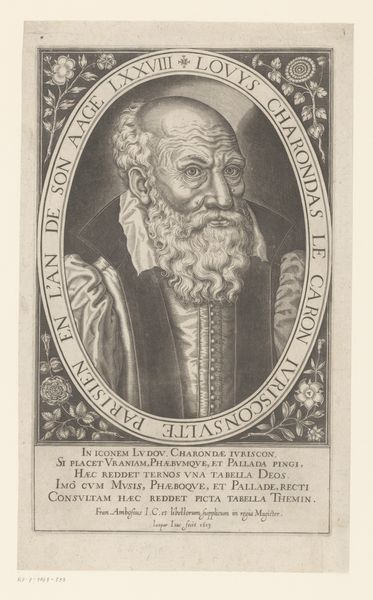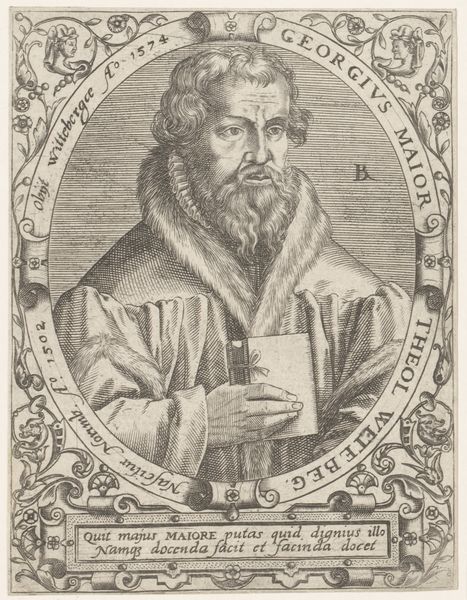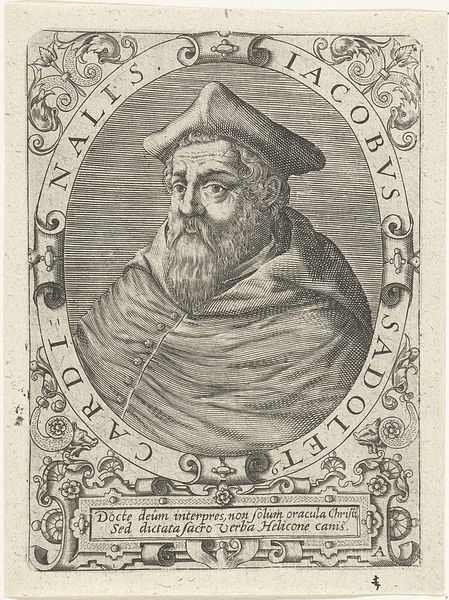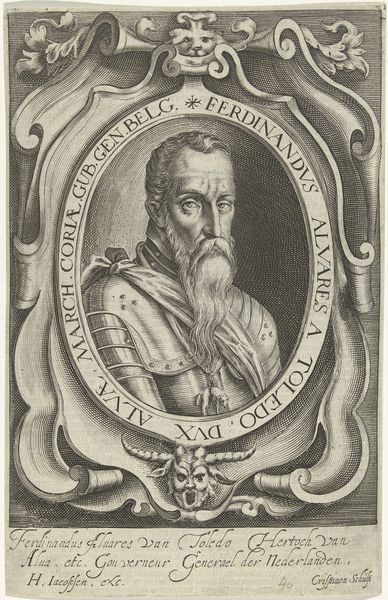
print, engraving
#
portrait
#
baroque
# print
#
engraving
Dimensions: height 265 mm, width 155 mm
Copyright: Rijks Museum: Open Domain
Curator: I'm immediately struck by the intense gaze of the subject. There’s such gravity in this portrait. Editor: That's fitting, considering we are looking at "Portret van dominee Kaspar Sautter", or Portrait of Reverend Kaspar Sautter, made by Dominicus Custos. The Rijksmuseum dates it to between 1599 and 1607. It's an engraving, a type of print, capturing a clergyman of his era. Curator: The tight framing accentuates his presence. And while it is a reproduction, the artist captures so much character, I imagine Kaspar Sautter was a strong influence within his community, certainly rooted within the traditional religious beliefs and customs of the time. The very deliberate choice of Latin inscriptions speaks volumes about the religious and societal frameworks during his time. How was it likely displayed and distributed in the local Augsburg? Editor: Absolutely. Consider that prints like these were key tools in disseminating images and ideas during the Reformation and Counter-Reformation. The inclusion of the German text beneath the portrait clearly speaks to this aim in the way its designed, which allows to give details regarding his position at Augsburg’s church, along with praise. These would circulate among the reverend's followers, celebrating and solidifying his public persona as it circulates into peoples home or personal pamphlets. It’s carefully constructed as an exercise in both memorialization, but in the circulation and construction of fame and legacy of its sitter. Curator: Thinking about legacy, the elaborate border feels symbolic, almost trapping Sautter within defined social roles. Editor: Indeed. It emphasizes the importance of social order and established structures of religious power that prevailed within the region, both acting in and against notions of change within a volatile religious environment. Also, as its an print work, its use can be replicated on a far mass produced medium rather than bespoke commissions done privately, furthering its outreach throughout social economic status. Curator: Thank you for the rich detail and insight into the historical underpinnings. Considering it’s a Baroque portrait from the Dutch Golden Age, how does this imagery fit with the broader historical themes during this era? It is an intimate window into a clergyman’s world. Editor: Reflecting on the socio-political circumstances through a figure such as Sautter, one can't help but note how cultural norms were perpetuated by even his very representation as it spread via engravings. Thank you for unpacking its identity and implications beyond what lies on the surface of his image!
Comments
No comments
Be the first to comment and join the conversation on the ultimate creative platform.
